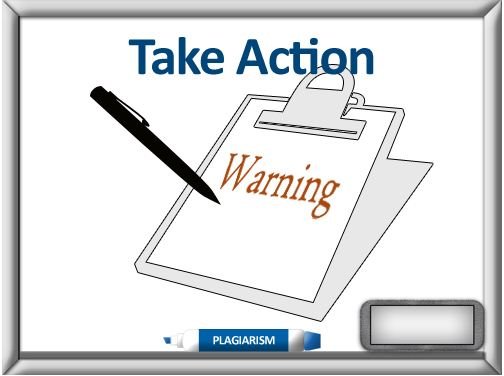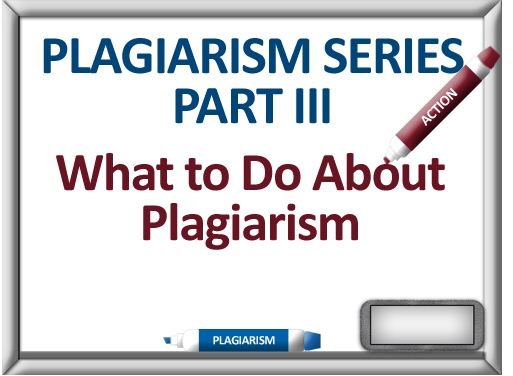Online Instructors: What to Do When Plagiarism Has Been Verified
Taking Action
Once a case of plagiarism has been identified and fully documented, it is the instructor’s responsibility to take action. It is inappropriate to ignore cases of plagiarism under the misguided hope that the student will not commit the offense again. It has been my experience that students who have plagiarized another writer’s work (and escaped detection) will be unlikely to reform without some kind of intervention. Therefore, the sooner the instructor addresses the issue, the more likely the student is to correct this behavior.
When plagiarism has been detected, two factors often influence the instructor’s actions: the degree of the violation (i.e., how flagrant the violation was) and any previous occurrences for which the student was reprimanded. The student’s understanding of what constitutes plagiarism may also have some bearing on the instructor’s response, but this varies based on the knowledge the instructor expects the students to have and whether or not any work has been done in the class to define plagiarism.
In most circumstances, it is valuable to have the student respond to the charge before moving further. I provide the student with what I have found and ask the student to respond. I have seen responses that vary from indignation to contrition. Some students simply drop the class and I don’t hear from them again.
In each case I use the opportunity as a teaching moment and stress the value of proper citations and the importance of original work. I also use the occasion to explain the impact of plagiarism on the original author, the class, and the student. In almost every case, students that respond acknowledge the infraction and vow not to let it happen again.
Warning

If the student has not previously plagiarized material and the infraction is minor, I warn the student about future mistakes and work to strengthen the relationship. The nature of the warning and the language I choose is dictated by the nature of the offense. E.g., a student who has left off a single in text citation will receive a much different response from me than a student who has copied a paragraph. The first instance of plagiarism results in a zero on the assignment. This helps to underscore the issue and segues into a warning that future offenses will have more serious consequences. Students, who commit a second act of plagiarism in my class, automatically receive a failing grade.
I also make one exception to the aforementioned actions that I use in cases of particularly blatant cases. When it is obvious that a student has submitted an entire paper that is the work of another person I fail the student automatically. I also submit the information to school administration who may choose to take further action.
Plagiarism Series Review
The point of this series of articles was not to insist on a particular way of dealing with plagiarism, but to provide some guidelines that instructors can use to build their own protocol. Instructors should be mindful of plagiarism in the online environment and work to assure that it is rooted out. When students escape consequences after committing this academic violation, it not only damages the reputation of the class but something arguably more serious happens. Students gain a false sense of accomplishment that leaves them ill prepared to deal with professional situations in which they need the very knowledge that they cheated themselves out of – with plagiarism.
